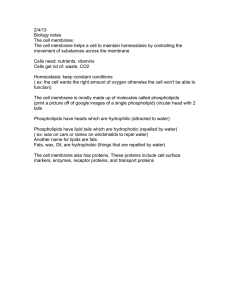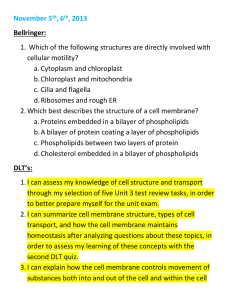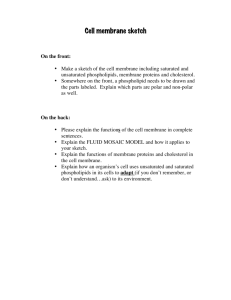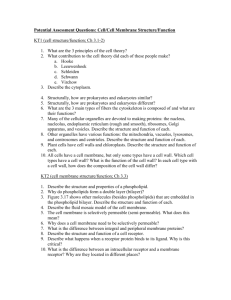final exam study guide
advertisement
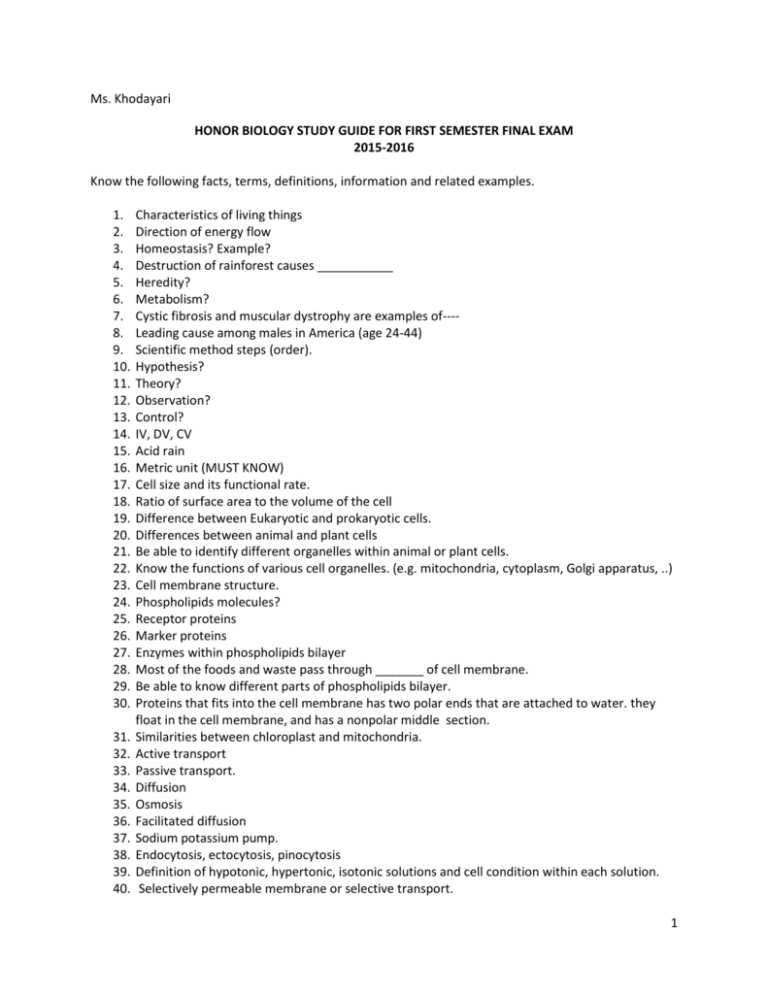
Ms. Khodayari HONOR BIOLOGY STUDY GUIDE FOR FIRST SEMESTER FINAL EXAM 2015-2016 Know the following facts, terms, definitions, information and related examples. 1. 2. 3. 4. 5. 6. 7. 8. 9. 10. 11. 12. 13. 14. 15. 16. 17. 18. 19. 20. 21. 22. 23. 24. 25. 26. 27. 28. 29. 30. 31. 32. 33. 34. 35. 36. 37. 38. 39. 40. Characteristics of living things Direction of energy flow Homeostasis? Example? Destruction of rainforest causes ___________ Heredity? Metabolism? Cystic fibrosis and muscular dystrophy are examples of---Leading cause among males in America (age 24-44) Scientific method steps (order). Hypothesis? Theory? Observation? Control? IV, DV, CV Acid rain Metric unit (MUST KNOW) Cell size and its functional rate. Ratio of surface area to the volume of the cell Difference between Eukaryotic and prokaryotic cells. Differences between animal and plant cells Be able to identify different organelles within animal or plant cells. Know the functions of various cell organelles. (e.g. mitochondria, cytoplasm, Golgi apparatus, ..) Cell membrane structure. Phospholipids molecules? Receptor proteins Marker proteins Enzymes within phospholipids bilayer Most of the foods and waste pass through _______ of cell membrane. Be able to know different parts of phospholipids bilayer. Proteins that fits into the cell membrane has two polar ends that are attached to water. they float in the cell membrane, and has a nonpolar middle section. Similarities between chloroplast and mitochondria. Active transport Passive transport. Diffusion Osmosis Facilitated diffusion Sodium potassium pump. Endocytosis, ectocytosis, pinocytosis Definition of hypotonic, hypertonic, isotonic solutions and cell condition within each solution. Selectively permeable membrane or selective transport. 1 41. 42. 43. 44. 45. 46. 47. 48. 49. 50. 51. 52. 53. 54. 55. 56. 57. 58. 59. 60. Sugar molecule cross the membrane through ___________ transport. Population Levels of ecosystem (individual, population, community…) Carrying capacity Exponential growth of a population r-strategist, k-strategist habitat niche, competitive niche, realized niche fundamental niche, exclusive niche biodiversity succession food chain & food web producer, primary consumer, secondary consumer, decomposers, detritovores, scavengers heterotrophs, autotrophs omnivore, carnivore and herbivore organism predation, parasitism, commensalism, symbiosis, mutualism, competition Pyramid of energy . biomass vs. ecomass Water cycle and its components (e.g. transpiration, evaporation,…) Carbon cycle, nitrogen cycle, phosphorous cycle and their components. Various biomes (their definitions and examples of each) NO ELECTRONIC DEVICE IS ALLOWED TO USE DURING FINAL EXAM. Please bring ONLY writing equipment such as pencils or pens. Wish you all good Luck and happiest Holiday 2

